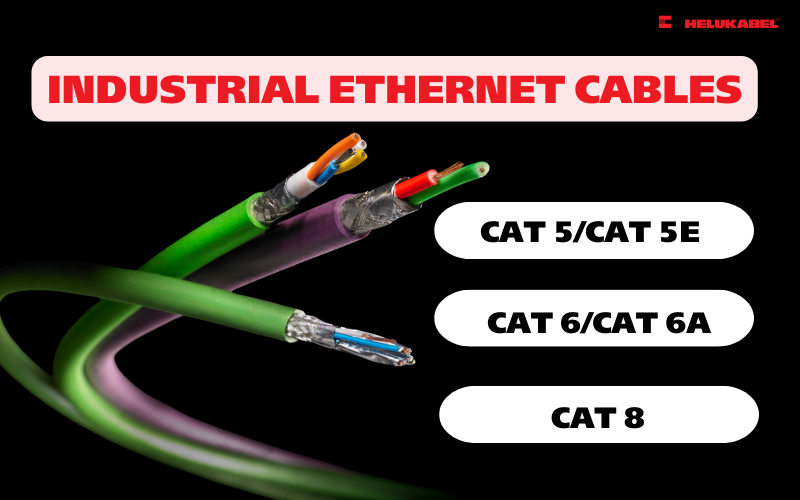What are fire alarm cables? Their features and applications
Fire alarm cables are indispensable for fire alarm systems, helping safeguard against the dangers of fires and explosions.
1. Fire alarm systems and fire alarm cables
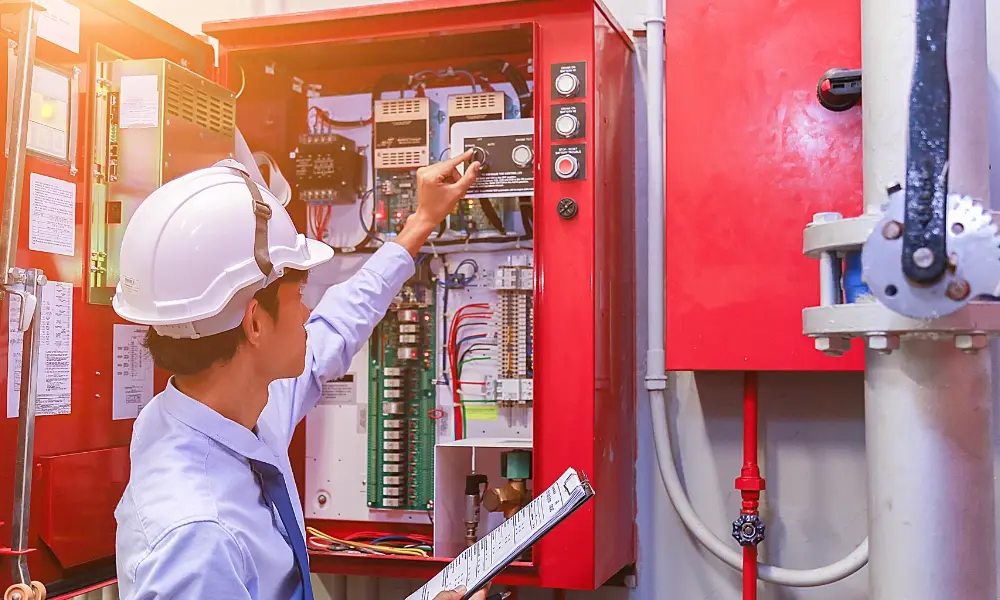
Fire alarm systems
1.1 The role of fire alarm systems
A fire alarm system is a collection of devices that work synchronously to detect and alert people through display and audio devices in the event of smoke, fire, carbon monoxide, or other emergencies. These alarm devices can be activated automatically by smoke detectors or heat detectors, or manually through devices such as emergency push buttons or pull stations. Alarm signals can be produced by mechanical bells or wall-mounted audio devices like fire sirens.
1.2 What are fire alarm cables?
Fire alarm cables are an essential component of any fire alarm system. They are used to connect security systems such as smoke detectors, emergency lights, exit signs, and fire control panels in high-rise buildings, commercial complexes, schools, hospitals, and various other locations. These cables are critical in environments where fire safety is of utmost importance.
Fire alarm cables differ from standard data cables we encounter in daily life. They form the backbone of any fire alarm system, transmitting signals across rooms, activating alarms, and playing a vital role in fire safety and emergency scenarios.
Fire alarm cables are designed with special insulating materials that provide:
- Reduced smoke emission when burned.
- Non-toxic emissions.
- In some cases, self-extinguishing properties when ignited.
Additionally, fire alarm cables are often manufactured with a red insulating jacket, making them easily identifiable. This feature facilitates quick system inspections and maintenance, optimizing fire alarm system management.
2. Standards for fire alarm cables
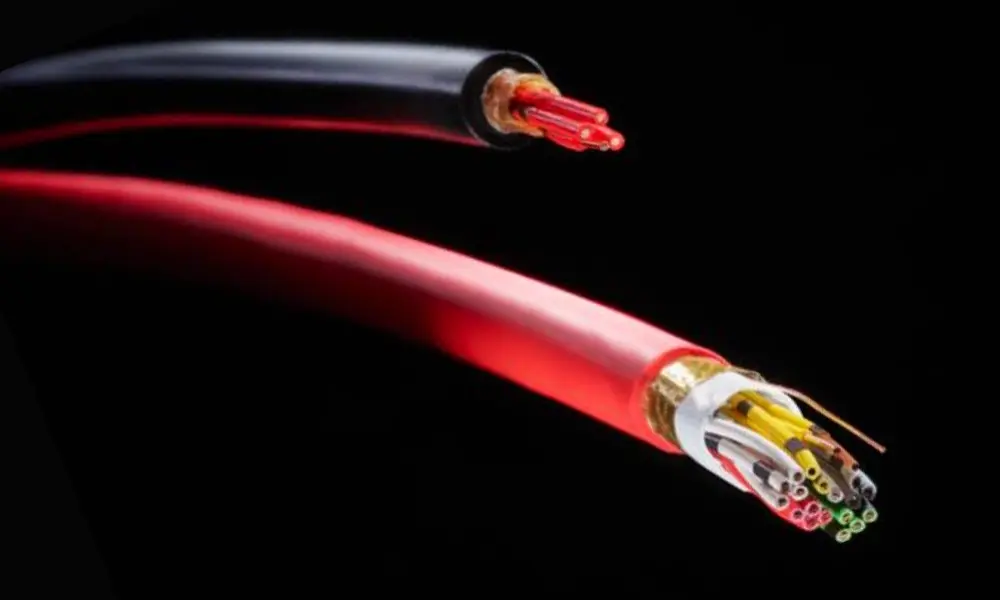
Fire alarm cables
Several organizations are responsible for developing and maintaining standards commonly applied to fire alarm cables:
- NFPA (National Fire Protection Association): This is a key organization that develops the NEC (National Electric Code), which sets standards not only for fire alarm cables but also for a wide range of electrical devices.
- ASTM International: Specializes in developing technical standards and testing methods for various materials, including fire alarm cables.
- Underwriters Laboratories (UL): Focuses on creating testing standards and certification processes for fire alarm cables to ensure they meet safety and performance requirements.
The standards issued by these organizations ensure that fire alarm cables meet the necessary technical, safety, and performance requirements to prevent and mitigate fire risks effectively. Fire alarm cables are subjected to various tests to verify their compliance with safety and performance standards, including:
- Caloric load value
- Corrosiveness of combustion gases
- Insulation integrity in fire conditions
- Smoke density test
- Functionality of cable systems
3. Applications of fire alarm cables
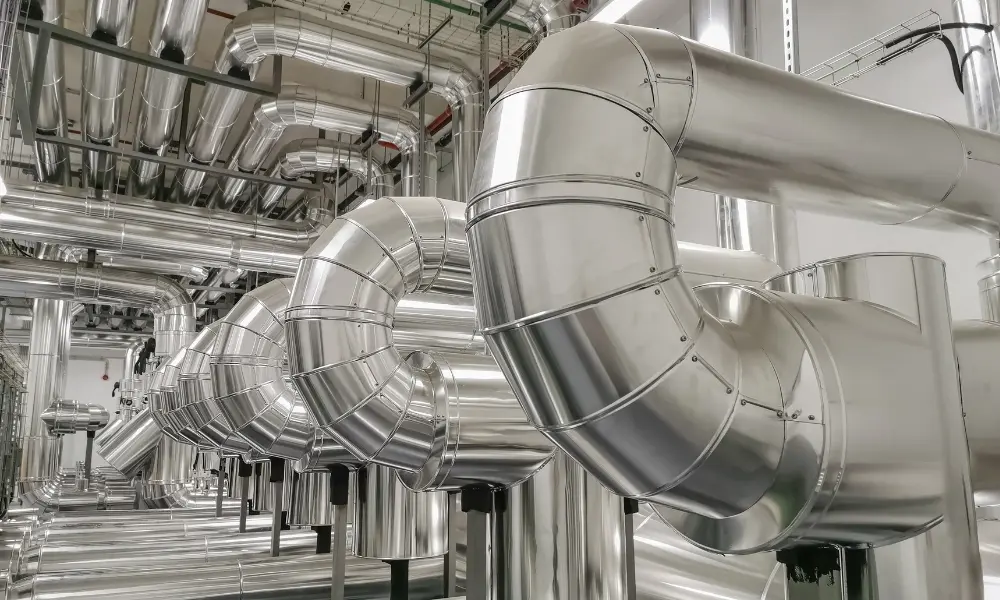
HVAC system
Fire alarm cables are becoming increasingly prevalent in buildings and facilities with high occupancy or stringent safety requirements to protect human lives and valuable assets. These applications include:
- Public buildings: Hospitals, airports, high-rise buildings, retail stores, shopping malls, hotels, theaters, cinemas, and schools.
- Safety systems and support equipment: Fire alarm systems, warning systems, ventilation systems, escalators, elevators, safety lights, operational stations, and specialized care areas.
- Transportation infrastructure: Subway systems and other railway networks.
- Technology and industrial facilities: Data centers, power plants, and industrial zones containing valuable or high-risk machinery and materials.
- Mining industry: Underground mining operations.
- Shipbuilding and offshore structures: Fire safety in maritime and offshore facilities.
- Emergency power supply systems: Backup power supply facilities.
These diverse applications highlight the essential role of fire alarm cables in ensuring safety and operational integrity across various sectors.
4. Classifications of fire alarm cables
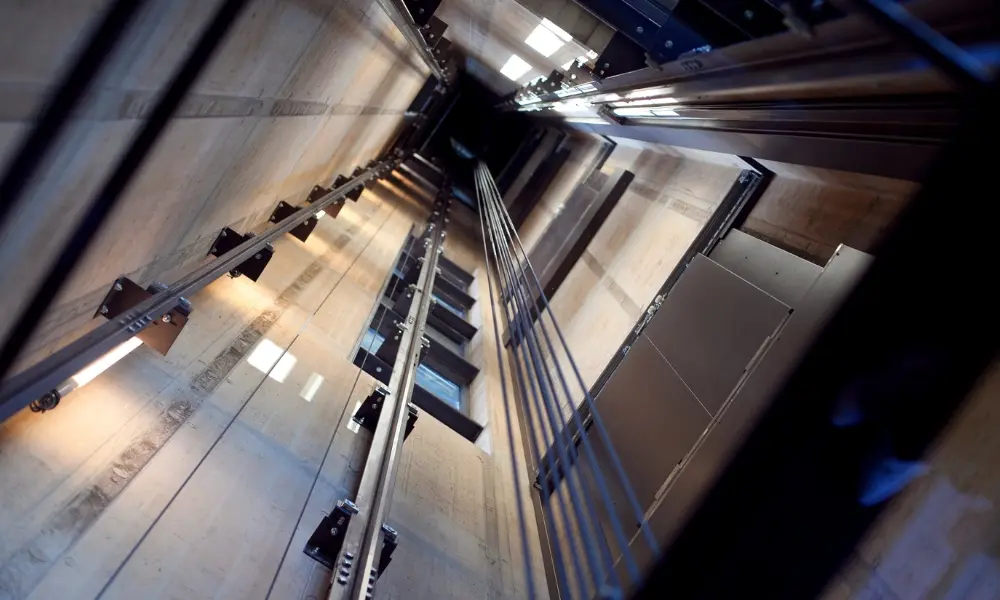
Riser space
Six common types of fire alarm cables:
- FPL (Fire Power Limited) cables: Designed for general use in spaces without specific fire resistance requirements, such as plenum or riser areas.
- FPLP (Fire Power Limited Plenum) cables: Used in plenum spaces, which require higher fire resistance due to the risk of rapid fire spread in these areas.
- FPLR (Fire Power Limited Riser) cables: Designed for vertical spaces (risers), connecting different floors in a building.
- Shielded FPLP cables: A shielded version of FPLP cable, offering protection against electromagnetic interference to ensure stable signal transmission in environments with numerous electrical devices.
- NPLF (Non-Power Limited Fire Alarm) cables: Used in applications with no power limitations, supporting higher voltage levels (up to 600V).
- NPLFP (Non-Power Limited Fire Protective) cables: Designed for plenum spaces, meeting stricter fire safety requirements than NPLF cables.
The selection of fire alarm cables depends on the installation location and specific fire safety requirements of the environment.
5. HELUKABEL’s fire alarm cables
5.1 General characteristics of HELUKABEL’s fire alarm cables
HELUKABEL fire alarm cables offer several outstanding features, including:
- Flame retardant and hardly combustibility so that no flame propagation in case of fire can be resulted
- Halogen-free: These cables do not release corrosive gases when burned.
- Low smoke emission: Halogen-free cables produce minimal smoke during combustion, reducing risks to visibility and respiratory health.
- Reduced toxic gas emission: Significantly lower toxic gas emissions compared to conventional cables.
- Low heat release: Generate less heat during combustion, limiting the spread of fire.
- Remarkable longer electrical functionality and flame influence
- Insulation integrity: Ensure circuit integrity for at least 30 minutes and up to 180 minutes at temperatures of 800°C.
- Radiation resistance: Capable of withstanding radiation up to 200 × 10⁶ cJ/kg (equivalent to 200 Mrad)
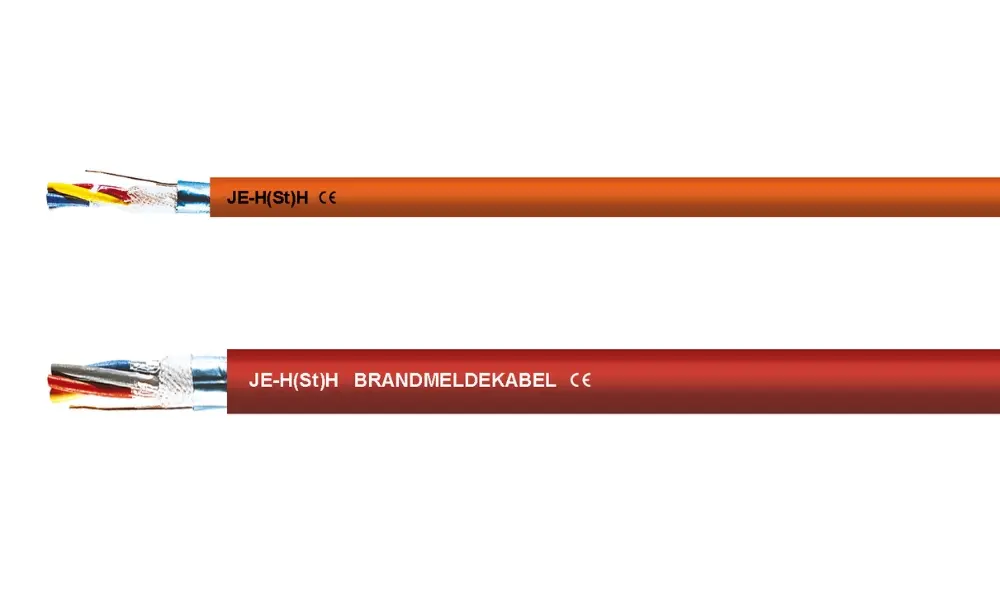
JE-H(St)H fire alarm cables
5.2 JE-H(St)H fire alarm cables
This cable is a flame-retardant, non-corrosive type, featuring a static shielding layer to prevent strong electromagnetic interference. It is suitable for fixed installations in areas where fire protection of human life and assets is crucial, such as industrial complexes, public buildings, hotels, airports, subway networks, and hospitals.
HELUKABEL offers this cable series in the following variants:
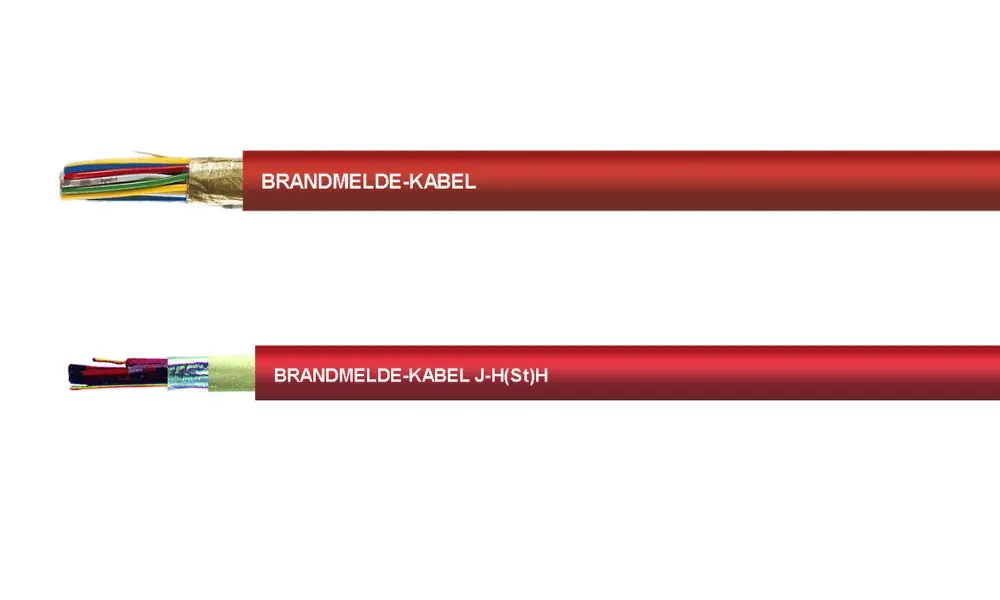
5.3 J-Y(St)Y Lg fire alarm cables
Equipped with a static shielding layer (St), the J-Y(St)Y Lg cable protects transmission circuits from external electromagnetic interference. This cable is ideal for telecommunications installations in dry or damp environments, telephone exchanges, branch lines, and for transmitting signals and data.
Important note: This cable is not suitable for high-current applications or power supply systems.
5.4 J-H(St)H fire alarm cables
J-H(St)H fire alarm cables are designed for telephone transmission, measurement, and control technologies. In addition to its anti-interference capabilities, it is made from high-oxygen-index insulation material, which prevents fire spread and does not emit corrosive gases when burned.
This makes it an ideal fire alarm cable for environments requiring high safety standards, reducing damage risks during fires and protecting both people and assets.
6. Frequently asked questions about fire alarm cables
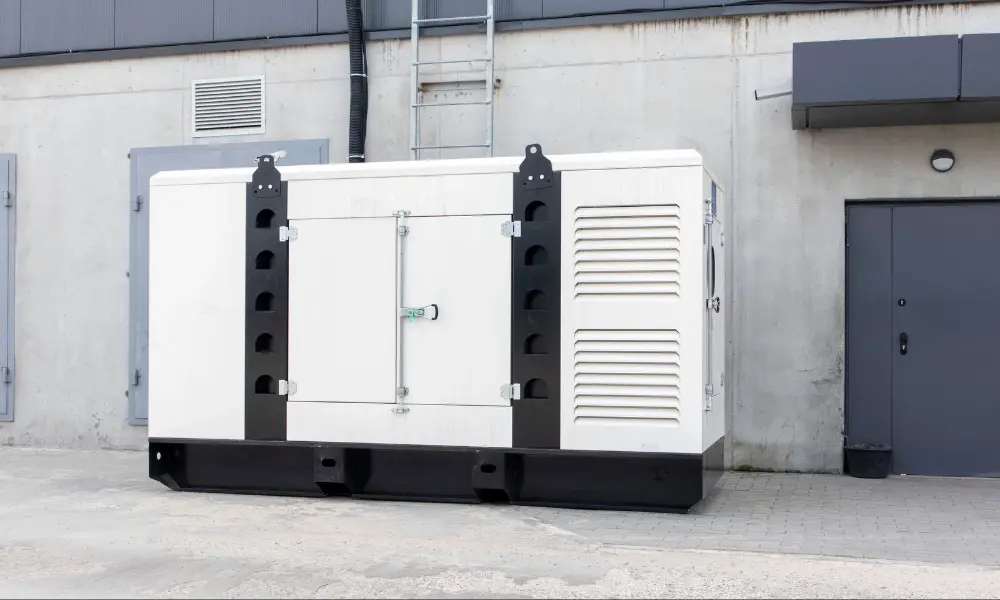
Plenum cables for emergency power supply systems
6.1 Differences between riser cables and plenum cables
In fire alarm systems, two key types of cables are commonly used are riser cables and plenum cables.
Riser spaces are vertical shafts in buildings, such as elevator shafts or other vertical conduits, that connect different floors. These spaces can also include a series of utility rooms or separate rooms on each floor used for installing electrical equipment and fire suppression systems. Riser areas facilitate the vertical distribution of utilities like plumbing pipes and communication cables. Since riser spaces are not part of the HVAC (heating, ventilation, and air conditioning) system, cables used in these areas are not required to meet the same stringent fire resistance standards as plenum cables. Key characteristics of riser fire alarm cables:
- Emit very little smoke.
- Do not release toxic substances.
- Self-extinguishing when exposed to fire.
Plenum refers to a space within a building used for air circulation and distribution in HVAC (heating, ventilation, and air conditioning) systems. These spaces are typically located between the structural ceiling and a suspended ceiling or beneath raised flooring. Plenum areas often house cables for telephone networks, computer systems, and other utilities.
Plenum fire alarm cables have additional features compared to riser cables to reduce fire hazards. Their jackets are typically made from flame-resistant materials that produce minimal smoke and are self-extinguishing. Examples of such materials include fluorinated ethylene polymer (FEP), polytetrafluoroethylene (PTFE), or low-smoke polyvinyl chloride (PVC).
6.2 Differences between PL and NPL fire alarm cables
Fire alarm cables are generally categorized as Power-Limited (PL) and Non-Power-Limited (NPL):
Power-Limited (PL) cables
- Characteristics: Designed to connect to power sources with limited capacity in terms of current and voltage.
- Applications: Primarily used in conventional fire alarm systems where maximum safety is required by restricting the energy transmitted through the cables.
Non-Power-Limited (NPL) cables
- Characteristics: Do not require limited power sources and can operate at higher voltages, up to 600V.
- Applications: Less commonly used in fire alarm systems but suitable for applications requiring higher voltage levels.
If you still have any concerns or questions, don't hesitate to reach out to HELUKABEL Vietnam's engineering team promptly for detailed assistance.
HELUKABEL® Vietnam
| Address | 905, Nguyen Kiem Street, Ward 3, Go Vap District, Ho Chi Minh City 700000, Vietnam |
| info@helukabel.com.vn | |
| Hotline | +84 28 77755578 |
| Website | www.helukabel.com.vn |
| Discover our products and place orders | Tiki | Product finder |
| Follow us on | Facebook | LinkedIn | Instagram | Youtube | Zalo | WhatsApp | Tiktok | Spotify |


